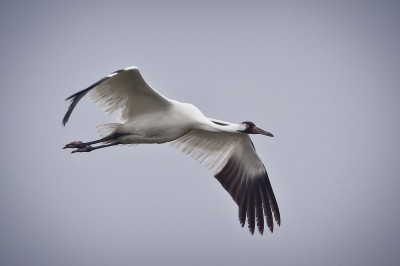Kentucky Officials Consider Longer Sandhill Crane Season
OutdoorHub Reporters 12.10.14

Biologists from the Kentucky Department of Fish and Wildlife have proposed extending the state’s current sandhill crane hunting season by as much twice the current length of 30 days. According to the The Courier-Journal, the maximum harvest limit of 400 birds has not been changed.
Although sandhill cranes are not considered threatened, Kentucky was the first Eastern state to open up hunting for the birds in 2011. The decision was hotly opposed by animal advocacy groups such as the Kentucky Coalition for Sandhill Cranes, which described the hunt as “like shooting fish in a barrel.” However, biologists say that the species appear to be doing well on the East Coast and have even increased in population slightly. Kentucky’s experimental sandhill crane hunt will continue for another year as officials analyze the results.

Not every crane in Kentucky is fair game, however. The Department of Fish and Wildlife warns that there have been at least six confirmed sightings of federally-protected whooping cranes in the state. The larger birds—which are the tallest in North America at about five feet—are critically endangered and may not be hunted. In fact, experts believe there are just around 500 of these tall, white cranes left in the world. Due to their similarity in silhouette to sandhill cranes, officials worry that hunters might mistake one species for the other.
“Whooping cranes are solid white with black wingtips,” the agency clarified in a press release. “They have a red crown. Adults may have a wingspan of 7 1/2 feet and stand up to 5 feet tall on stilted legs. Juvenile birds are similar to the adults, but will have patches of brown or tan mixed in with the white.”

